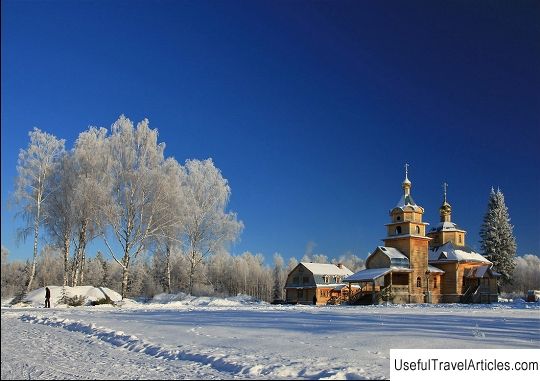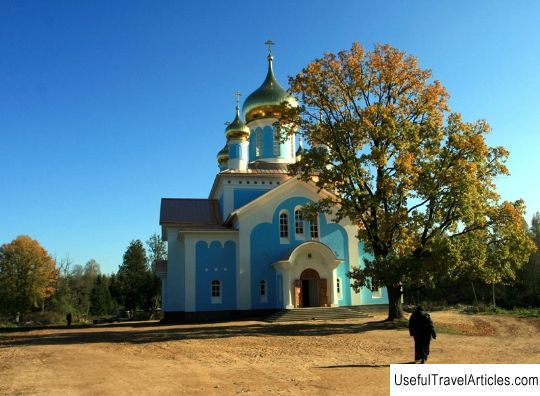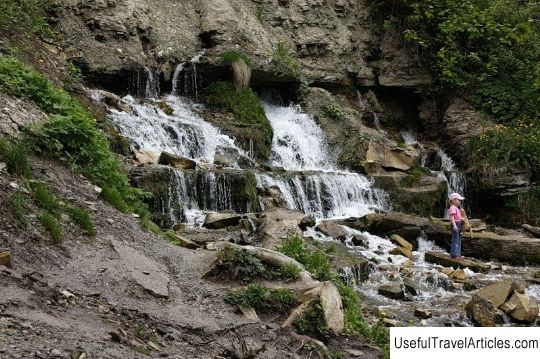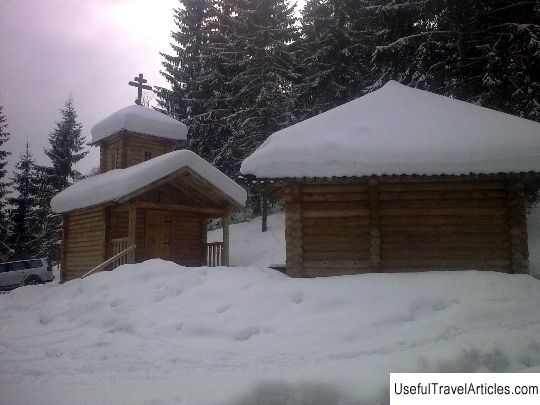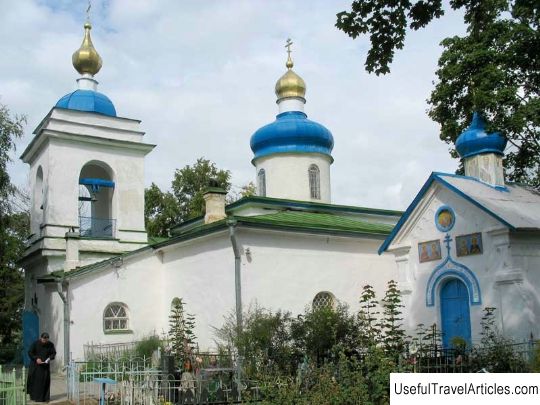Holy springs of Nikandrova desert description and photos - Russia - North-West: Pskov region
Rating: 8,2/10 (2540 votes) 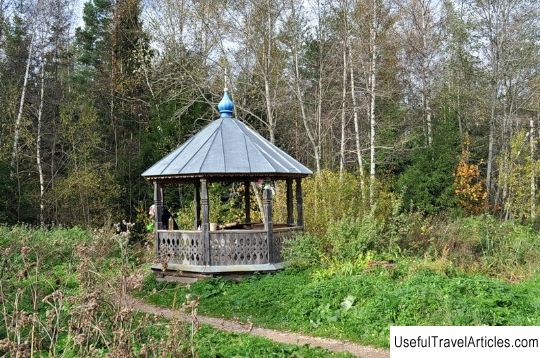
Holy springs of Nikandrovaya desert description and photos - Russia - North-West: Pskov region. Detailed information about the attraction. Description, photos and a map showing the nearest significant objects. Photo and descriptionThere are four holy water springs in the Nikandrova Hermitage: in the name of the Monk Nikandr the Hermitage, in the name of the Kazan Icon of the Mother of God, the holy apostles Paul and Peter, or a spring with "dead" and "living" water , as well as a source in the name of the Monk Alexander of Svir. Sources of this kind in the Nikandrovaya desert are formed as a result of a break in the earth's crust. Spring water maintains the same temperature throughout the year, equal to +4 degrees, and also carries an amazing healing and healing power. According to legend, the water of one of the sources helped to get rid of eye diseases, and also relieved diseases associated with joints, and even cured purulent ulcers. The greatest respect and veneration was received by the source, next to which there was a chapel, consecrated in the name of Savvaty and Zosima, in which a wooden shrine was kept, which kept in itself the relics of the Monk Saint Nikandr until the end of the 18th century. It has a well-deserved fame and a key located near the chapel called the Picturesque Spring. The holy spring of the Kazan Icon of the Mother of God is located right at the entrance to the monastery itself on the right side; The second name of this sacred spring is "Glaznoy", because it was in this place that many pilgrims healed eye diseases, although drinking water from this source is not recommended due to the fact that the water has a cloudy color associated with the presence of peat, as well as a bitter taste. There is a sign next to the source showing the location of other sources. To find the source, consecrated in honor of the Monk Alexander of Svir, you must go through 1, 3 km from the monastery deep into the forest. According to legend, it was at the site of this spring that Alexander Svirsky himself appeared to the Monk Nikandr during his prayers. Alexander Svirsky was tonsured at the Valaam monastery. He founded a monastery 36 versts from Olonets, located near the Svir River. Throughout his life, Alexander supported Nikandr in a hermitic lifestyle and always helped him when he saw various kinds of visions. Alexander Svirsky died in 1533. The spring named after him has beautiful bluish water, which contains a lot of radon. Popularly, the source is called Yellow, which is associated with the color of the grass, which turns rusty through the waters flowing from the source. Spring water is yellow due to the high content of ferrous compounds, which has found application in the treatment of diseases of the gastrointestinal tract. The depth of the spring reaches 7 m. Along the forest path, starting from the monastery, you can come to the hydrogen sulfide spring, consecrated in the name of the holy Reverend Nikandr - this is the most important source of the entire desert. There is a chapel right above the spring. Popularly, the source is called Silver or Dental. In the chapel over the spring, even before the revolution, there was a cover of the saint's coffin, made of oak. There is a belief that in case of a toothache, you need to touch the lid, drink water from the holy spring, and then the pain will pass. According to the test results, spring water contains a large amount of silver ions, which has a noticeable smell of hydrogen sulfide, which is used in the treatment of arthritis, rheumatism, muscles, bones, diseases of the spine, and hydrogen sulphide water is used for baths, rinsing and irrigation. Two springs in the name of Saints Paul and Peter are located in one chapel: on the right there is a source with "living" water, and on the left - with "dead" water. With the help of "dead" water, diseases can be cured, but "living" water is especially tasty and very useful for the body. It seems that, since the sources are located nearby, the water should be the same, but the difference lies in the fact that the water rises from different depths and from different layers of rocks, passing through different cracks. This source healed from male and female diseases, diseases of the heart and its vessels, nervous system. At the moment, a huge number of pilgrims come to all sources. They bathe in the radon spring in summer and winter, and from the other three they drink water and wash themselves.             We also recommend reading House of the Brotherhood of Blackheads description and photos - Estonia: Tallinn Topic: Holy springs of Nikandrova desert description and photos - Russia - North-West: Pskov region. |
